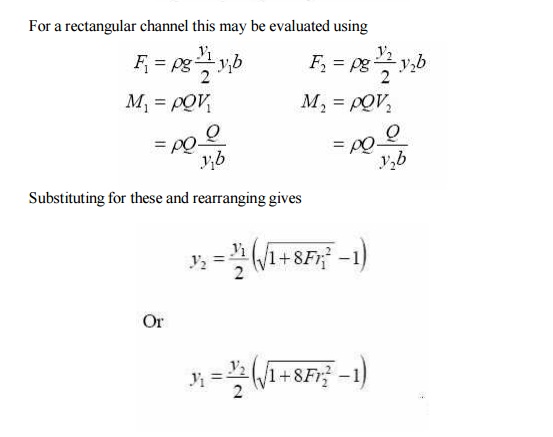Chapter: civil : Applied Hydraulic Engineering: Rapidly Varied Flow
Application of the Momentum equation for Rapidly Varied Flow

Application of the Momentum equation for Rapidly
Varied Flow
The hydraulic jump is an
important feature in open channel flow and is an example of rapidly varied
flow. A hydraulic jump occurs when a super-critical flow and a sub-critical
flow meet. The jump is the mechanism for the to surface to join. They join in an
extremely turbulent manner which causes large energy losses.
Because
of the large energy losses the energy or specific energy equation cannot be use
in analysis, the momentum equation is used instead.

Resultant
force in x- direction = F1 - F2
Momentum
change = M2 - M1
F1
- F2 = M2 - M1
Or for a
constant discharge
F1
- F2 = M2 - M1
= constant
For a rectangular channel this may be evaluated using
So knowing the discharge and either one of the
depths on the upstream or downstream side of the jump the other - or
conjugate depth - may be easily computed.
More manipulation with Equation and the specific energy give
the energy loss in the jump as
Del E = (y2-y1)3 / Del(y1y2)
These are useful results and which can be used in
gradually varied flow calculations to determine water surface profiles.
In summary, a hydraulic jump will only occur if the upstream
flow is super-critical. The higher the upstream Froude number the higher the
jump and the greater the loss of energy in the jump.

Related Topics